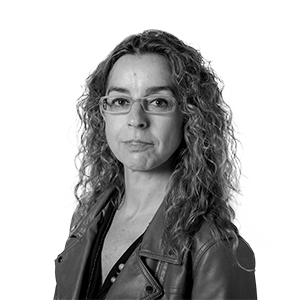In burqa and by road: how to enter Taliban-held Afghanistan
The main difference is the security checks and the white flags of the Islamists


Special envoy to KabulA few kilometres from Torkham, Pakistan's border with Afghanistan, you can already see trucks parked one after the other on the side of the road, forming an endless queue that disappears into the horizon. They are huge trailers, decorated with beautiful colours, as is the tradition in Pakistan. Almost all of them also have big black scarves hanging from the back of the trailer. The drivers say they help ward off misfortune and bad luck. All the trucks are waiting to cross the border into Afghanistan.
Despite the billions of dollars invested in Afghanistan by the international community over the last twenty years, the country produces hardly anything, importing almost everything from abroad. And from the long queue of trucks, it is clear that it continues to do so and that the traffic of vehicles between the two countries has not stopped despite the return of the Taliban to power.
On the other hand, few people cross the border on foot, and the few who do push and shove each other and fight to get into customs first. There, a Pakistani officer checks my luggage with a scanner and questions me about the number of dollars I have on me. He even demands that I show them to him and sign a document stating that the declared amount is the money I actually have. "If you lie, you'll be in big trouble", he warns. At a counter, another officer stamps my passport with the Pakistan exit stamp. Before crossing the border, a health worker gives me two drops of polio vaccine on my tongue. There is no other option, it is a prerequisite for leaving the country. On the other hand, there is no control over the coronavirus.
To get to the Afghan side of the border, you have to walk through a long corridor of plastic-roofed fences. There are also few people: the occasional family and men carrying large bags who seem to be travelling alone. At the end of the corridor, a young man dressed in Afghan army uniform and who does not look like a Taliban checks my passport, my press card and the authorisation from the Taliban Ministry of Information to enter the country. He writes down my name and the name of my newspaper in a notebook and lets me pass. A few meters away, another young man who speaks English and does not look Taliban at first glance does the same and takes pictures of my documents. Neither of them asks me for my Afghan visa -which in theory is a prerequisite to enter the country-, nor stamps my passport, nor asks me anything about the coronavirus. I am already in Afghan territory.
In 2000, when the Taliban were also in power, I made this journey for the first time. It took me eight hours to cover the 230 kilometers that separate the border with Kabul, the Afghan capital. At that time the road was a rutted road, with almost no pavement and craters in the roadway caused by the war. In some sections there were children armed with shovels who filled the holes with earth so that the drivers would throw them a tip through the window of the vehicle.
This Tuesday I made the same journey in half the time: four hours. The road is now perfectly asphalted, has a broken line painted on the road marking the double carriageway - something I have not seen on any other road in Afghanistan - and even has traffic signs indicating, for example, the speed limit, which, evidently, nobody respects. There are also children on some stretches, but they are now busy collecting empty plastic bottles thrown by drivers from vehicles and then selling them. According to the Afghans, the road from Torkham to Kabul is the best in the country. There is no other like it. It was fixed in the last two decades with money from the international community. Now it is another inheritance left to the Taliban.
On the road there are Taliban checkpoints. They are easy to identify because a big white flag flies at the side of the road and militiamen with Kalashnikovs stop all vehicles one by one. The driver of the vehicle in which I am travelling, as soon as he sees a checkpoint in the distance, places on his head the small white crocheted cap that Muslims use to pray and asks me to cover myself with a burqa. The Taliban let us pass easily without searching the vehicle or asking questions. The control at the entrance to Kabul is not more thorough.
The white Taliban flag also flies on the former Afghan army bases and on many roadside shops. It is difficult to know whether their owners really support the new regime or have put it up to protect themselves. In 2001, many shopkeepers put the picture of mujahideen leader Ahmad Sha Masud on their shops, after the mujahideen helped the United States bring down the Taliban regime and became the new rulers of the country despite having committed war crimes in the past. For if there is one thing Afghans are very good at, it is adapting to survive.
